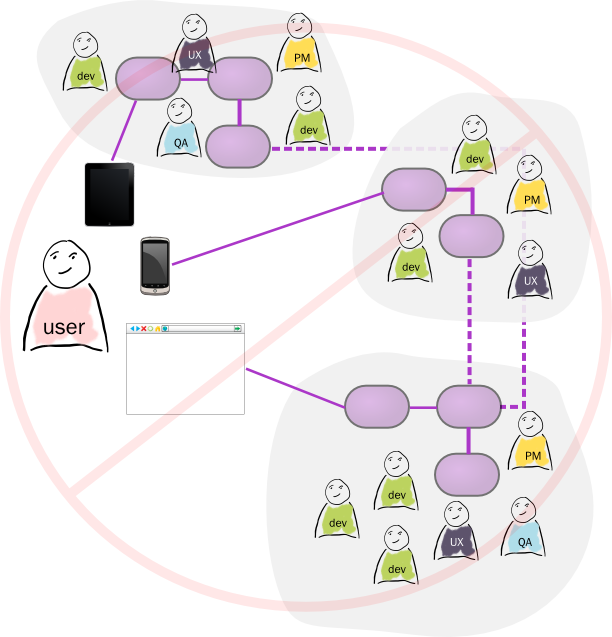tagged by: mobile
Linking Modular Architecture to Development Teams

Can a modular architecture improve software delivery? Yes! -but with some caveats. This article charts the journey of an enterprise who set out to shift their architecture to a more modular one in order to ease their growing pains. They found that modularity is a multifaceted solution that extends beyond architecture, into business lines of communication, team topologies and effective developer experience. By paying close attention to these factors, the enterprise was able to achieve significant uplifts in the delivery performance of their mobile applications.
Using the Strangler Fig with Mobile Apps

Incremental replacement of a legacy mobile application is a challenging concept to articulate and execute. However, we believe by making the investment in the pre-requisites of legacy modernization, it is posible to yield benefits in the long term. This article explores the Strangler Fig pattern and how it can be applied to mobile applications. We chart the journey of an enterprise who refused to accept the high cost and risk associated with a full rewrite of their mobile application. By incrementally developing their new mobile app alongside a modular architecture, they were able to achieve significant uplifts in their delivery metrics.
Selecting a Mobile Implementation Strategy
The sudden and rapid explosion of mobile technology in the past five years offers huge opportunities. While it seems likely that a number of mobile platforms will continue to thrive, mobile customers are demanding a very high quality of user experience from their applications. This article presents two strategies for implementing a mobile channel that will assist in balancing user experience and platform coverage while also providing a path forwards for your apps.
Evolving a Mobile Implementation Strategy
Mobile is still a smaller part of traffic than the traditional web, but its share is growing, so we need to think about our strategy for developing effective mobile applications. We discuss thinking about a product vision, separating the styles of user engagement into “Lean-forward”, “Lean-back”, and “Look-down” styles; while integrating them into a transmedia application. We talk about why its more important to focus on value than on traffic, the laser and cover-your-bases platform strategies, and opine that Android, iOS, and the Web are the three viable platform choices. Giles finishes with a case-study of our work with a major airline.
Multiple Mobiles
Mobile devices are increasingly important as a platform for customers and employees to use software services. Lots of people are busy building mobile applications, but also lots of vendors are busy building mobile devices. This range of mobile devices presents a challenge - how do you support lots of mobile devices?
Cross Platform Mobile
With the rise of so many mobile platforms, each with a different UI, many people are looking at cross-platform toolkits. These allow you to write a mobile app once and then deploy it to a range of mobile devices. Are these toolkits worth using?
Trans Media Application

Mobile applications have been a hot item in software development over the past couple of years. Like many software delivery companies, Thoughtworks get a lot of requests from clients asking us to build a mobile application for them. However most of the time a company asks us (or anyone) to build a mobile application they are starting off on the wrong foot. I'd argue that for most situations, even though you want users to interact with a mobile device, you should never think of building a mobile application. Instead you need to think about building a single application that presents across multiple devices: mobile, desktop, tablet - or whatever device your users might use.
